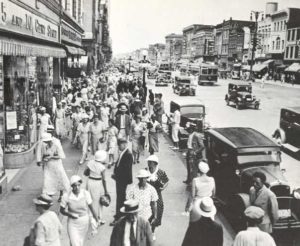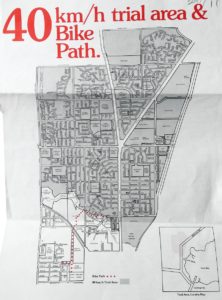The History of the Three E’s
How did we get here, and what can we do to change how we approach transportation planning, engineering, and design?

Where did the Three E’s paradigm come from? The transportation profession has been organized around these three E’s of Engineering, Education, and Enforcement since the early days of the National Safety Council in 1925, when the rise of the automobile began to dominate city planning and infrastructure investment. Traffic safety programs have been built around these three disciplines for more than half a century, in an attempt to stem the tide of 40,000-50,000 traffic-related deaths every year.
In 1970, the National Highway Traffic Safety Administration (NHTSA) was created to take responsibility for traffic safety education and enforcement, as distinct from the engineering responsibilities of the Federal Highway Administration (FHWA).

The active transportation movement is not free from this mindset. In the early 1970s, a new wave of bicycle plans – prompted by an oil crisis and gas shortages – used the three Es structure, until 1977 when the authors of the Geelong Bicycle Plan (an Australian city near Melbourne), added “encouragement” for the first time. This new and unique element spoke to the need to actively promote these two forgotten modes of travel and was quickly adopted as standard for bicycle and pedestrian planning around the world.
In 2003, the League of American Bicyclists created the Bicycle Friendly Community program and added “evaluation” as a fifth “E” to capture planning and research as an essential element of transportation systems development. However, even these additions remain rooted in a discipline-based rather than a values-based approach; the latter being necessary to truly think beyond modes and disciplines to improve access and safety for everyone.
While the old E’s were a useful way to organize professional disciplines and thinking during the explosive growth of motor vehicle travel and highway expansion, this approach is now proving too rigid and siloed as our profession confronts the far-reaching effects of transportation history. Communities that are committing to reversing climate change, achieving Vision Zero, improving the quality of life, and redressing historical and structural inequities in communities across the country require a new way of thinking about transportation, now and into the future.
To center our work on values that create a more equitable society where everyone has safe and efficient access to jobs, services, shops, schools, and family and friends, we propose three new words to inspire and guide the transportation profession: ETHICS, EQUITY, and EMPATHY.